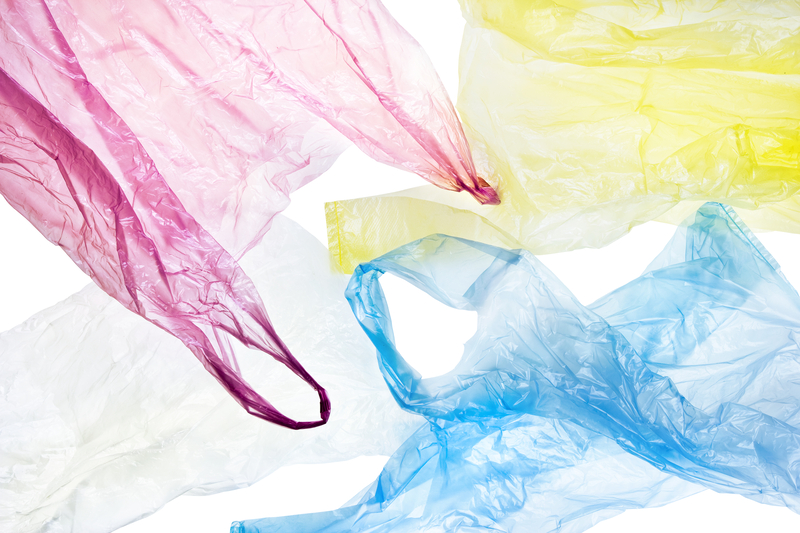From Masks to Gloves: Handling PPE Disposal the Right Way
In the wake of global health crises like COVID-19, the proper use of Personal Protective Equipment (PPE) has become part of our daily routine. Masks, gloves, face shields, and gowns protect us from infectious diseases. However, as vital as PPE is, so is its correct disposal. PPE waste is mounting, and without responsible management, it threatens our environment and public health. This comprehensive guide will walk you through proper PPE disposal, including safe handling, environmental impacts, and best practices to minimize risks.
Understanding the Importance of Proper PPE Disposal
PPE disposal may seem simple, but improper practices can have serious consequences. Pathogens can survive on contaminated masks and gloves for hours or days, posing infection risks. Moreover, large amounts of PPE waste add to landfills and pollute oceans, endangering wildlife and exacerbating the plastic pollution crisis.
- Environmental Impact: Most disposable PPE is plastic-based and non-biodegradable.
- Health Risks: Mishandled PPE can spread infectious agents in communities and healthcare settings.
- Waste Management Strain: Surging PPE use burdens municipal waste systems.

Types of PPE Requiring Safe Disposal
PPE comes in various forms, each with its own disposal requirements. Here's an overview of common types needing attention:
- Masks: Medical masks, N95 respirators, cloth masks
- Gloves: Disposable latex, nitrile, or vinyl gloves
- Face Shields: Often plastic, either disposable or reusable
- Gowns: Used mainly in healthcare settings
- Shoe Covers and Hair Nets: Used in clinical or sterile environments
For everyday users and healthcare professionals, understanding the correct method for disposing of each PPE type ensures both safety and environmental protection.
Mask Disposal: Doing it Safely
Why Mask Disposal Matters
Masks intercept respiratory droplets, but after use, they may harbor bacteria or viruses. Throwing masks in regular recycling or littering them outdoors amplifies contamination risks.
How to Dispose of Masks Properly
- Do not recycle: Disposable masks are not recyclable with household waste due to synthetic fibers and contamination.
- Bag before trashing: Place the used mask in a plastic or paper bag before putting it into a sealed garbage bin. This contains pathogens and prevents accidental contact.
- Do not flush: Never flush masks down toilets--they can cause blockages and environmental harm.
- Handle with care: Wash your hands with soap and water (or sanitize) immediately after disposal.
Disposing of masks responsibly helps protect sanitation workers, the public, and our planet.
Proper Disposal of Disposable Gloves
Potential Dangers with Glove Waste
Disposable gloves, often used by healthcare workers, cleaners, and shoppers, can accumulate pathogens quickly. Improper disposal can lead to accidental exposure and environmental litter.
Best Practices for Glove Disposal
- Remove gloves correctly: Pinch the outside near the wrist, peel off without touching your skin, and dispose of each glove separately.
- Place in a designated bin: Gloves should go into lined, non-recyclable trash bins, never in recycling or on the ground.
- Sanitize hands: Always clean your hands after handling used gloves.
Binning gloves prevents the spread of pathogens to surfaces or people who may handle waste later.
Disposing of Other PPE: Face Shields, Gowns, and More
Face Shields
- Reusable shields: Clean and disinfect after each use; keep using until it's damaged, then dispose in general waste.
- Disposable shields: Treat as contaminated and dispose in sealed trash bins.
Gowns, Shoe Covers, Hair Nets
- Healthcare waste: If potentially infectious, follow facility protocols for hazardous waste (often labeled and colored bags).
- General use: Dispose in closed bins; avoid littering or flushing.
Note: Businesses or hospitals with high volumes of PPE should arrange specialized clinical waste collection to ensure environmental safety and regulatory compliance.
Handling PPE Disposal in Different Settings
At Home
- Bag used PPE (masks, gloves) before putting it in the trash.
- Wash your hands thoroughly after touching used PPE.
- Do not put any PPE in recycling bins.
- Infected household members should double-bag and store waste for 72 hours before final disposal, if possible, to reduce risk.
In Public Spaces
- Use dedicated PPE disposal bins if provided.
- If no bin is available, store used PPE securely until you can dispose of it at home.
- Never leave masks or gloves in shopping carts, parking lots, or public areas.
In Healthcare Facilities
- Follow strict medical waste handling protocols.
- Label and segregate PPE waste in appropriate containers (often color-coded for hazardous waste).
- Train staff regularly on current guidelines for PPE disposal.
- Ensure clinical waste is collected and processed by licensed contractors.
Environmental Impact and Solutions for PPE Waste
With billions of PPE items discarded monthly during pandemics, the environmental toll is staggering:
- Plastic PPE products persist in the environment, causing microplastic pollution.
- Wildlife can become entangled in mask loops or ingest glove fragments.
- Landfills are overburdened by single-use items, slowing down decomposition.
Innovations and Sustainable Practices
- Circular PPE initiatives: Some companies are developing programs to collect and recycle limited-use PPE into raw materials (e.g. road surfaces, park benches), though this is still in early stages.
- Biodegradable alternatives: Look for PPE made from compostable or natural materials where possible.
- Proper education: Raising awareness about how to safely dispose of masks and gloves reduces litter.
- Reusable PPE: Use washable fabric masks and face shields when acceptable, reducing waste.
Every action counts: By choosing reusable PPE and disposing of single-use items responsibly, everyone contributes to a cleaner, safer world.
PPE Disposal and the Law: Regulations You Should Know
- OSHA (Occupational Safety and Health Administration): In workplace settings, OSHA provides clear guidelines for handling, disposing, and transporting PPE waste.
-
Local sanitation authorities: Cities often provide specific rules for hazardous and infectious waste.
Tip: Check your local sanitation department's website for up-to-date disposal regulations. - Healthcare facilities: Hospitals and clinics must comply with environmental laws for clinical waste, sometimes facing steep penalties for violations.
Top Tips for Safe and Eco-Friendly PPE Disposal
- Avoid Littering: Always dispose of PPE in a trash bin, not on streets or in nature.
- Bag it: Seal used PPE in a bag before discarding it.
- Do Not Recycle Used PPE: Contaminated items do not belong in standard recycling.
- Wash Hands Immediately: After touching used PPE, sanitize or wash your hands thoroughly.
- Double-bag If Sick: If PPE is from an ill individual, double-bag and set aside for 72 hours before tossing out.
- Switch to Reusable Items: Use washable masks and face shields when feasible.
- Educate Others: Spread the word about responsible PPE waste management.
Common Mistakes to Avoid in PPE Disposal
- Placing masks or gloves in recycling bins (these are not recyclable).
- Flushing PPE down the toilet, risking sewage blockages and marine pollution.
- Leaving used PPE in public places, parking lots, shopping carts, or sidewalks.
- Handling PPE with bare hands--always remove and discard carefully.
- Reusing single-use PPE items, which can increase infection risks.

Raising Public Awareness: How Everyone Can Help
Education plays a vital role in ensuring safer cities and a healthier environment. Share these guidelines with family and friends, advocate for dedicated PPE disposal bins in workplaces and public areas, and encourage local businesses to invest in sustainable waste solutions.
- Social media campaigns: Use platforms to share facts and infographics about proper PPE disposal.
- Community clean-up days: Organize events to pick up littered PPE and educate participants.
- Schools and offices: Include PPE disposal instructions in safety protocols and announcements.
Conclusion: Your Role in Responsible PPE Disposal
From masks to gloves, handling PPE disposal the right way is about protecting others and caring for our planet. Each used mask or glove you dispose of properly prevents disease transmission and keeps plastic out of rivers and oceans. As PPE remains a part of our world, let's adopt safe, mindful disposal practices. Small changes in our routines--bagging PPE, choosing reusables, and raising awareness--can add up to a big difference.
*Let's commit to responsible PPE waste management. The health of our communities and environment depends on it.*
